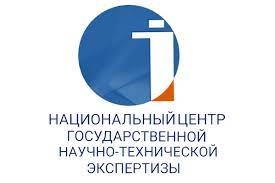PROSODIC AND ORTHOEPIC NORMS IN KAZAKH SPEECH SYNTHESIS
https://doi.org/10.55491/2411-6076-2025-3-96-104
Abstract
The article addresses the issues of prosodic and orthophonic norms in the speech synthesis of the Kazakh language. Currently, there is a growing need to develop and improve speech synthesis for the Kazakh language. This need is linked to the rapid development of modern technologies and artificial intelligence, which has stimulated relevant research. The article emphasizes the importance of improving speech synthesis, as well as the need for accurate reading by announcers in accordance with orthophonic norms and the precise conveyance of prosodic features. For the study, a 62-page text from the 11th-grade “Kazakh Literature” textbook was used. The text examines phonetic phenomena such as segmentation into syntagms, harmony of vowels and consonants, agreement between roots and affixes, changes between rhythmic groups, assimilation, dissimilation, reduction, variation, and elision, all in accordance with orthophonic norms. In addition, to ensure natural speech synthesis in accordance with orthoepic and prosodic norms, an algorithm was developed to describe sound changes within words, at word boundaries, and between rhythmic groups, and the text was annotated with prosodic markup. The educational material was subjected to prosodic analysis, during which eight intonemes characteristic of the Kazakh language and described by academician Z.M. Bazarbaeva were used.
About the Authors
A. AmanbayevaKazakhstan
Aisaule Amanbayeva, Candidate of Philological Sciences, Associate Professor
Almaty
O. Nurzhakupov
Kazakhstan
Olzhas Nurzhakupov, Doctoral Student
Almaty
References
1. Aqtanova, A.S. (2020) Qazaq adebietі: 1-bolіm. Zhalpy bіlіm beretіn mekteptіng qogamdyq-gumanitarlyq bagyttagy 11-synybyna arnalgan oqulyq. Almaty: Atamura. 144 b. [Aktanova, A.S. (2020) Kazakh literature: Part 1. Textbook for the 11th grade of a general education school in the social and humanitarian direction. Almaty: Atamura. 144 p.] (in Kazakh)
2. Amanbaeva, A. (2016) Sojlenіm sintezі: formanttyq zhane kompiljativtіk adіster. Tіltanym. No.2 B. 88-90. [Amanbayeva, A. (2016) Speech synthesis: formant and compilative methods. Tiltanym. No.2. P. 88-90.] (in Kazakh)
3. Badanbekqyzy, Z. (2001) Qazaq tіlіndegі fonemalardyng dybys qorlary: filol. gylym. kand. ... avtoref. Almaty. 134 b. [Badanbekovna, Z. (2001) Sound resources of phonemes in the Kazakh language: abstract ... Candidate of Philological Sciences. Almaty. 134 p.] (in Kazakh)
4. Bazarbaeva, Z. (2008) Qazaq tіlі: intonologija, fonologija. Almaty: Аrys. 324 b. [Bazarbayeva, Z. (2008) Kazakh language: intonation, phonology. Almaty: Аrys. 324 p.] (in Kazakh)
5. Bondarko, L.V. (1967) Struktura sloga i harakteristiki fonem. Voprosy jazykoznanija. No.1. S. 34-46. [Bondarko, L.V. (1967) Syllable structure and characteristics of phonemes. Questions of linguistics. No.1. P. 34-46.] (in Russian)
6. Derkach, M.F., Gumeckij, R.YA. Gura, B.M., Chaban, M.E. (1983) Dinamicheskie spektory rechevyh signalov. L`vov: Izd. pri L`vov univ-te. 168 s. [Derkach, M.F., Gumetsky, R.Ya. Gura, B.M., Chaban, M.E. (1983) Dynamic spectrum of speech signals. Lviv: Publishing house at Lviv. univ. 168 p.] (in Russian)
7. Fant, G. (1964) Akusticheskaja teorija recheobrazovanija. Moskva: Nauka. 284 s. [Fant, G. (1964) Acoustic theory of speech production. Moscow: Nauka. 284 p.] (in Russian)
8. Flanagan, D.L. (1986) Analiz, sintez i vospriyatija rechi. Moskva: Svjaz`. 394 s. [Flanagan, D.L. (1986) Analysis, synthesis and perception of speech. Moscow: Svyaz. 394 p.] (in Russian)
9. Golubcov, S.V. (1969) Sintez rechi. Trudy Vsesojuznoj shkoly-seminara ARSO-4. Kiev. S. 107-130. [Golubtsov, S.V. (1969) Speech synthesis. Proceedings of the All-Union School-Seminar ARSO-4. Kyiv. P. 107-130.] (in Russian)
10. Kjunnap, E.Yu. (1975) Sintezatory rechevogo signala. Tallin: Valgus. 240 s. [Kunnap, E.Yu. (1975) Speech signal synthesizers. Tallin: Valgus. 240 p.] (in Russian)
11. Lobanov, B.M. Cirul'nik L.I. (2008) Komp'juternyj sintez i klonirovanie rechi. Minsk: Belorusskaja nauka. 342 s. [Lobanov, B.M. Tsirulnik L.I. (2008) Computer synthesis and cloning of speech. Minsk: Belorusskaya nauka. 342 p.] (in Russian)
12. Orfojepijalyq sozdіk (2007). Qurast.: R. Syzdyq, A. Zhunіsbek, N. Uali, Q. Kuderinova, A. Fazylzhanova. Almaty: Arys. 800 b. [Orthoepic dictionary (2007). Compiled by: R. Syzdyq, A. Zhunіsbek, N. Uali, Q. Kuderinova, A. Fazylzhanova. Almaty: Arys. 800 p.] (in Kazakh)
13. Qazaq grammatikasy. Fonetika, sozzhasam, morfologija, sintaksis (2002). Astana: Astana poligrafija. 784 b. [Kazakh grammar. Phonetics, word formation, morphology, syntax (2002). Astana: Astana polygraphy. 784 p.] (in Kazakh)
14. Rybin, S. (2014) Sintez rechi. SPb.: Universitet ITMO. 92 s. [Rybin, S. (2014) Speech synthesis. St. Petersburg: University ITMO. 92 p.] (in Russian)
15. Sorokin, V.N. (1992) Sintez rechi. Moskva: Nauka. 392 s. [Sorokin, V.N. (1992) Speech synthesis. Moscow: Nauka. 392 p.] (in Russian)
16. Uаli, N. (2007) Grafika, orfografija, orfojepija. 342 b. [Uali, N. (2007) Graphics. Spelling. Orthoepy. Almaty. 342 p.] (in Kazakh)
17. Zhumabaeva, Zh. (2016) Qazaq tіltanymdagy sojlenіm sintezі. Tіltanym. No.2. B. 91-94. [Zhumabayeva, Zh. (2016) Speech synthesis in Kazakh linguistics. Tiltanym. No.2. P. 91-94.] (in Kazakh)
18. Zhunisbek, A. (2009) Qazaq fonetikasy. Almaty: Arys. 312 b. [Zhunisbek, A. (2009) Kazakh phonetics. Almaty: Аrys. 312 p.] (in Kazakh)
19. Zlatoustova, L.V. (1997) Akusticheskie i perceptivnye harakteristiki spontannoj rechi. Govor. XIV. No.1-2. S. 77-87. [Zlatoustova, L.V. (1997) Acoustic and perceptual characteristics of spontaneous speech. Govor. XIV. No.1-2. P. 77-87.] (in Russian)
Review
For citations:
Amanbayeva A., Nurzhakupov O. PROSODIC AND ORTHOEPIC NORMS IN KAZAKH SPEECH SYNTHESIS. Tiltanym. 2025;(3):96-104. (In Kazakh) https://doi.org/10.55491/2411-6076-2025-3-96-104

















